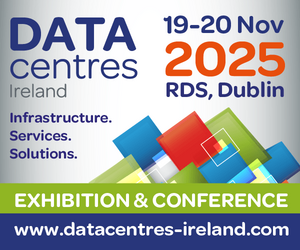
Stop Flood project zeros in on hyper-local predictions
In association with Research Ireland
As the effects of climate change intensify, flood risk will grow, making it a major global challenge. Today, around 1.8 billion people globally are living in locations exposed to flood risk, with that number expected to rise, not just because of climate change but also because we continue to build in places that are at risk of flooding.
Here in Ireland we are not immune to that risk, we are already seeing cities like Cork being hit by flooding causing millions of euro in damage. For Dr Thomas McDermott, one of the lead researchers in University of Galway’s Stop Flood project, solving the flood risk problem is something he’s been working on for years.
“We can’t keep building our way out of trouble. Yes, flood defence schemes and flood infrastructure is going to be part of the solution, but we also need to get better at anticipating and managing flood events when they occur. We know we’re going to get more of those extreme events. The Stop Flood project aims to support the systems and tools that people use to manage these extreme weather events so that they can better respond. The ultimate goal is to reduce the costs of flooding, but also to reduce the impact on people, businesses and communities.”
McDermott works with engineer Dr Indiana Olbert on Stop Flood. When they began work on the project they knew they needed to understand what system was already in place. The team spent a lot of time speaking to people in the local authorities who are responsible for managing severe weather risks, and one thing was clear – gathering the data needed to anticipate and be proactive with flooding is a mammoth task.
“A lot of time and effort is spent gathering data. From looking at the Met Éireann website, and other forecasting websites, checking the tides, gathering all that data together and putting it into spreadsheets to try and figure out ‘how severe is this going to be’ and where best to deploy resources, is a major challenge,” explains McDermott.
“What we quickly realised is the system is vulnerable to things like changing conditions. If you get an event that’s very similar to events you’ve experienced before, the local authorities know what they need to do. But if an event is somehow different, they will struggle, at least initially, to respond to that, because they will be basing decisions on what they’ve always done before.”
Stop Flood uses numerical and machine learning models to gather, process and analyse key data, explains Olbert. “We use a complex system, mostly data driven machine learning, take all of this information, process it, learn from past events and predict how the next event will impact an area, right down to individual street level. This level of granularity hasn’t been done anywhere in Ireland, and it provides more effective hyper-local forecasting. This is then used by another part of our project group who are building a platform that local authorities or other stakeholders can use to make critical decisions,” says Olbert.
Dynamic views
The end-user interface is a Web-based platform for severe weather managers in local authorities. “It’ll appear as a dashboard, and the dashboard will include dynamic maps showing the predicted flooding over the next 24, 36 and 48 hours in very high resolution. We’re currently piloting this platform for the city of Cork. So what users will see is a map of Cork City highlighting exactly where flooding is expected, and how severe the flooding will be in each individual location.
The dashboard will be interactive, so they’ll be able to click on certain locations and bring up more information about what’s predicted for that location. Alongside our AI-based flood prediction model we’ll also have all the information managers currently use like tide, heights, meteorological data, historical events and risk maps. So there’ll be lots of benchmarks of information that’s familiar, alongside what our model is producing,” says McDermott.
Olbert explains: “Our goal is to build a system that it’s fit for purpose and works for each city or county council, that’s why we work so closely with them. It’s built directly for their needs.
“Once this is finalised, we will be replicating the system for a number of cities, Galway, Dublin, Limerick. Right now we will focus on large urban areas where the risks and damage potential are quite significant. The system, once it’s built, will be able to be replicated anywhere we want, anywhere there is a need. And the system will also be able to be replicated outside of Ireland. There is no restriction of going global with this.”
McDermott and Olbert are also working closely with Met Éireann, who are the Societal Impact Champions for the project. The system is in a beta testing phase now, where the models are showing predictive capability, says McDermott. “We’re in the stage of trying to operationalise those for real time forecasting. Parallel to that, we are developing the front end, the user interfaces. Right now we have a beta version of our dashboard, and we’re developing a more fully dynamic, interactive version of that. So we’re taking that to the local authorities to get their feedback and we’re asking them what they want to see, what’s useful to them.”
Stop Flood is currently in the Grow Phase of the National Challenge Fund, a €65 million research fund established under the Government of Ireland’s National Recovery and Resilience Plan (NRRP), funded under the EU’s Recovery and Resilience Facility, coordinated and administered by Research Ireland.
It joins four other teams in the Digital for Resilience group, which is focused on transformational societal and economic impact from disruptive digital technologies. These four teams will have the opportunity for additional funding in the final phase of the programme, where prize funding of €1 million is on offer.







Subscribers 0
Fans 0
Followers 0
Followers